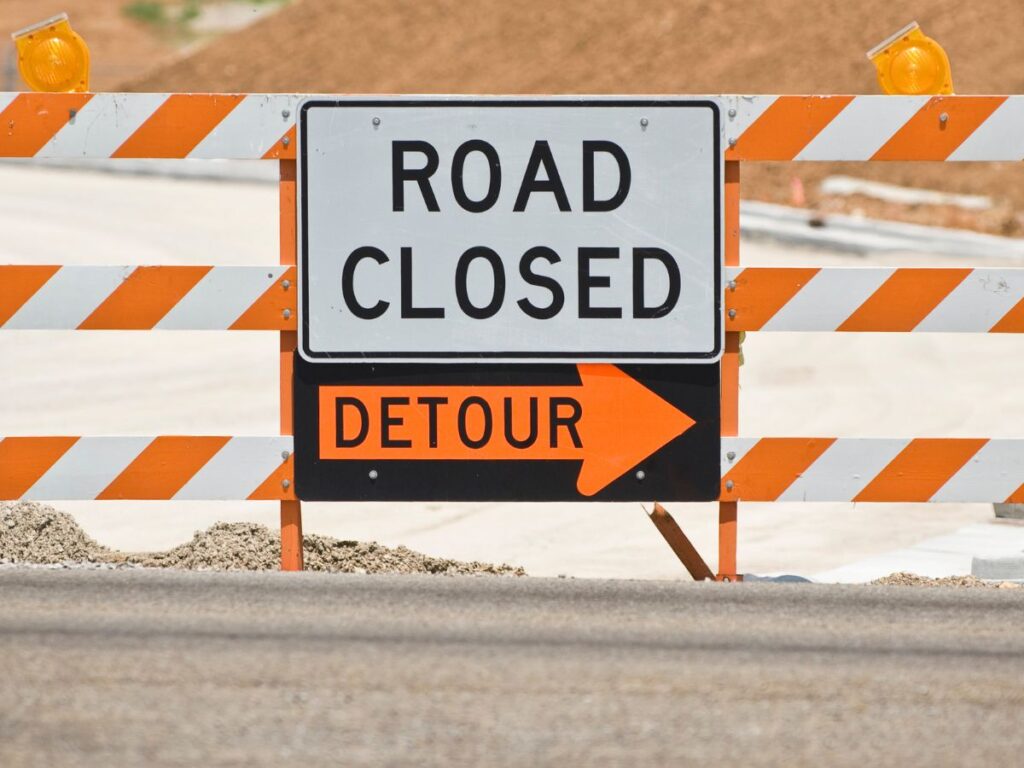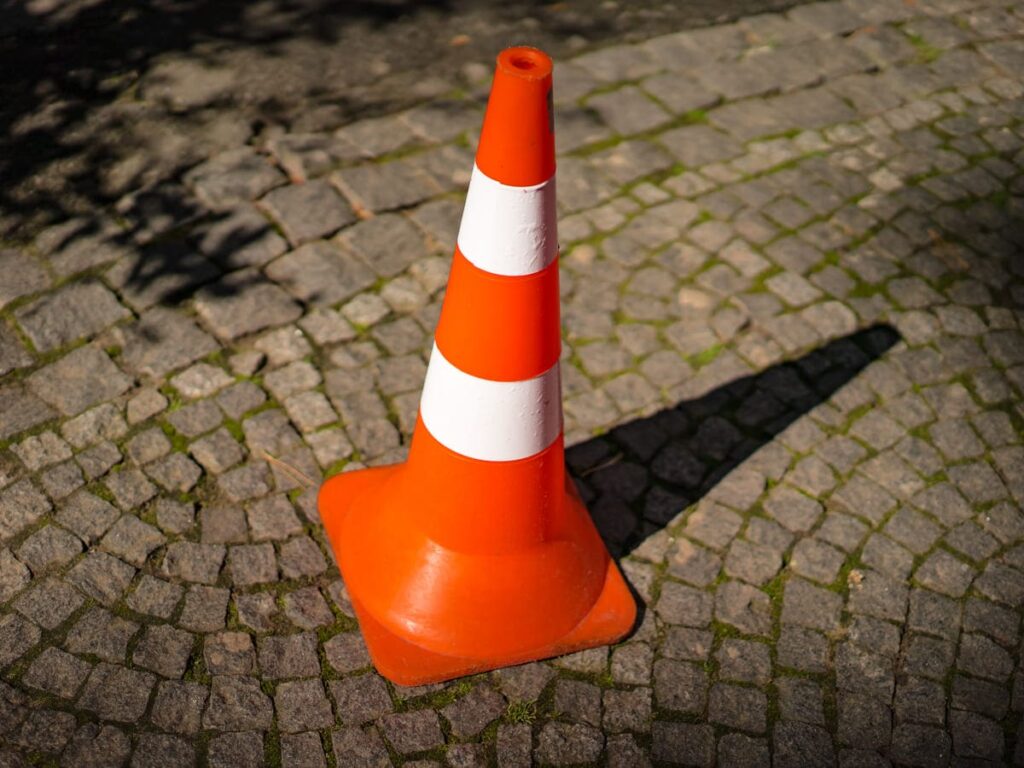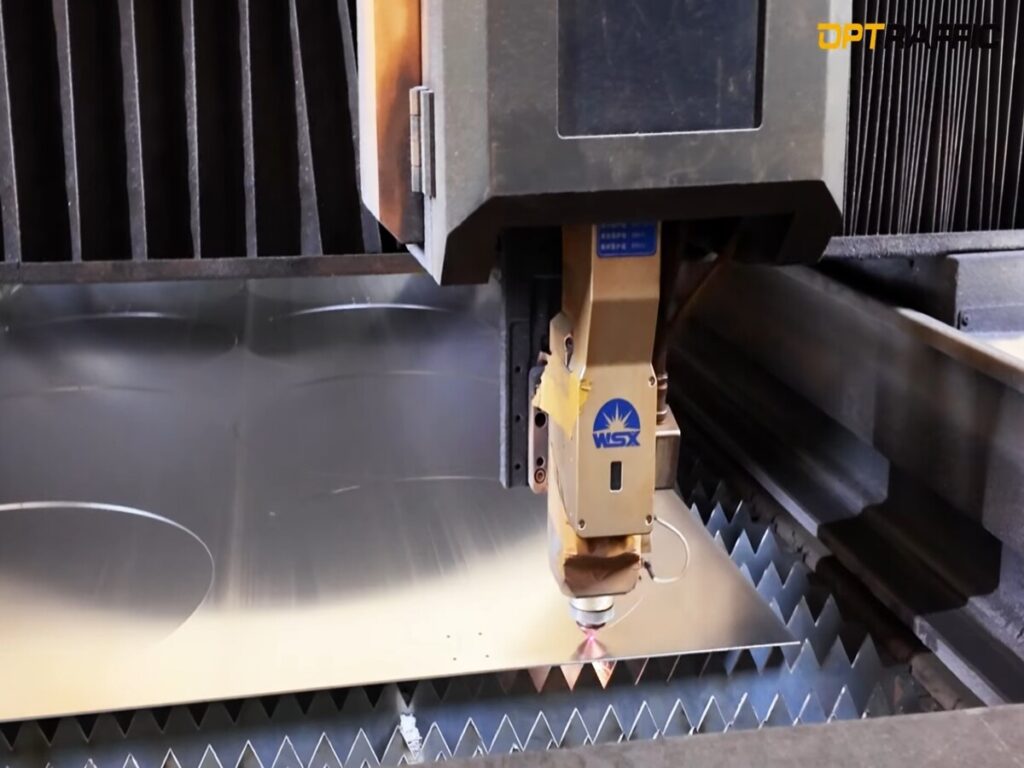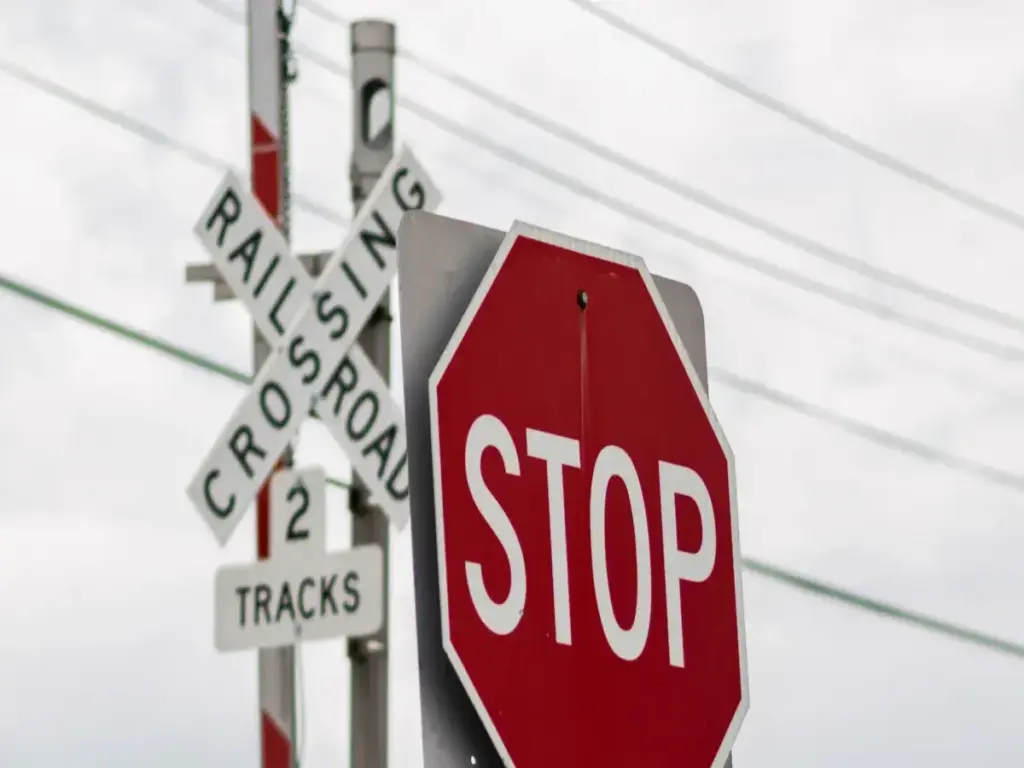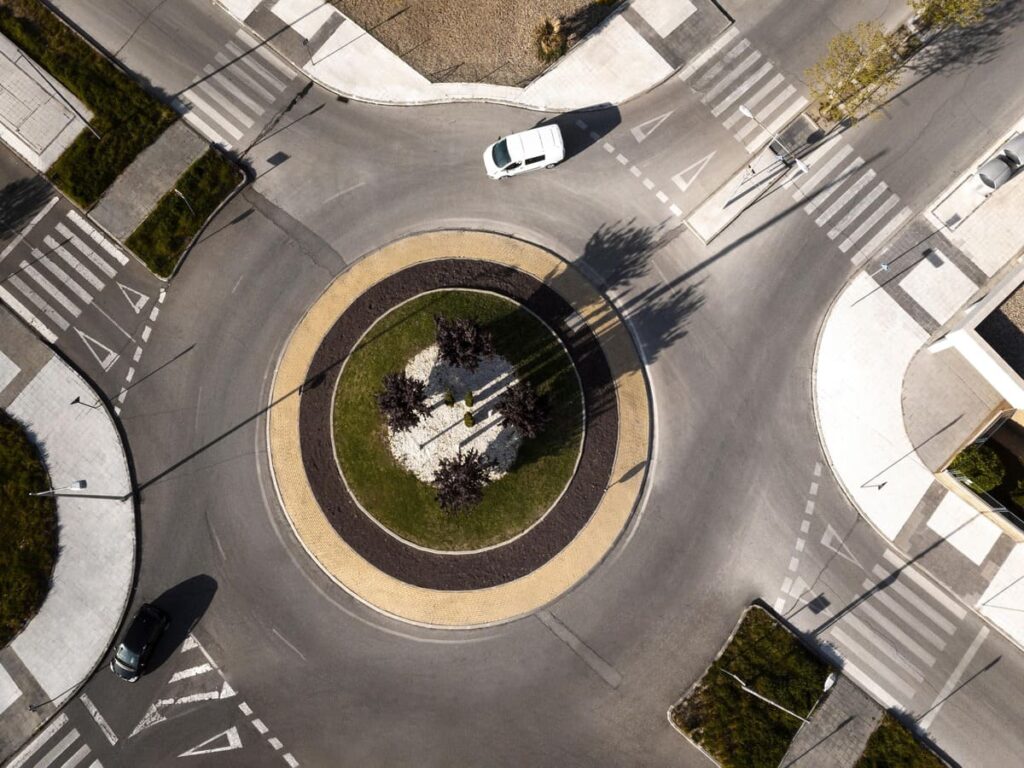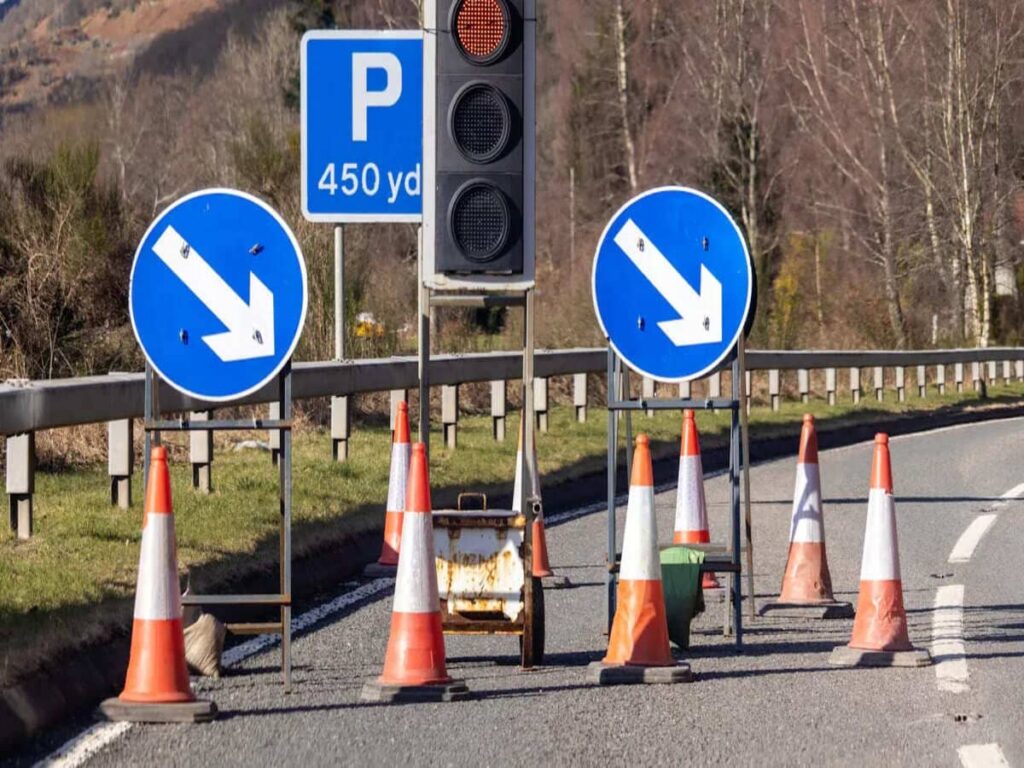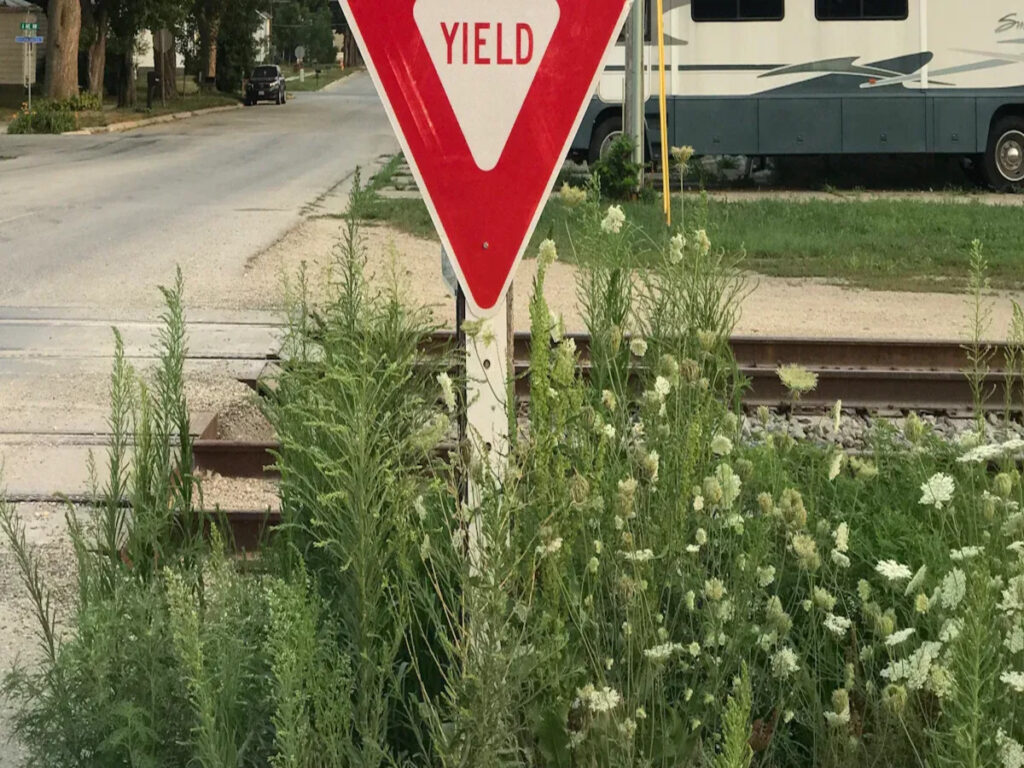
Train horns are very loud and can bother people living nearby. Quiet zones help by cutting down on this noise. In these zones, trains don’t use their horns at crossings, making the area quieter for residents. तथापि, maintaining safety in these areas can be challenging.
Traffic safety signs are crucial for ensuring safety in quiet zones. Studies show that these warning systems help drivers stay alert and reduce the likelihood of accidents. उदाहरण के लिए, crashes at crossings decreased by 5% with the implementation of such tools. This demonstrates how traffic safety signs can effectively guide drivers and prevent accidents, even in the absence of train horns.
पर ऑप्टट्रैफ़िक, हम टिकाऊ प्रदान करते हैं, अनुपालन, और highly visible traffic safety signs for sale that support safety initiatives in railroad quiet zones and beyond. Whether you’re outfitting a city-grade crossing or upgrading signage for a construction zone, our signs are built to meet strict Mutcd मानक and perform reliably under tough outdoor conditions.
चाबी छीनना
- Quiet zones lower train noise by stopping horn use. This makes the area calmer for people living nearby.
- Traffic signs are important in quiet zones. They help drivers and walkers stay careful without loud sounds.
- Putting signs in the right spots helps avoid accidents. It also keeps traffic moving safely and smoothly.
- Signs made with bright, reflective materials can be seen in any weather. This makes crossings safer.
- Cleaning and fixing signs often is very important. It keeps them easy to see and useful for everyone.
Understanding Quiet Zones and Their Importance
The Purpose of Train Horns at Railroad Crossings
Train horns are important for keeping people safe at crossings. They make a loud sound to warn drivers, वॉकर, and even animals about a train coming. The sound, बीच में 92 dB and 110 dB from 100 फ़ुट दूर, is loud enough to be heard clearly. This is crucial because trains can’t turn to avoid hitting something in their path.
The Federal Railroad Administration (FRA) requires train horns to sound at least 15 seconds before reaching public crossings. If a train is going slower than 45 मील प्रति घंटा, the horn must sound continuously. At higher speeds, horns must still sound at specific spots. अधिक समय तक, loud horns and bells have helped reduce crashes, making them a key safety tool for railroads.
| Rule or Requirement | विवरण |
|---|---|
| FRA Rule | Train horns must sound at least 15 seconds before public crossings. |
| Sound Level | Horns must be between 92 dB and 110 dB from 100 feet ahead of the train. |
| Speed Rule | Horns sound continuously below 45 मील प्रति घंटा; at higher speeds, they sound at set locations. |
How Quiet Zones Reduce Train Noise
Quiet zones help reduce train noise in neighborhoods. इन क्षेत्रों में, trains don’t use their horns at crossings, which makes things quieter for people living nearby. This creates a calmer environment but also means other safety tools are needed to keep crossings safe.
Instead of loud horns, quiet zones use signs and signals to warn people. These zones depend on clear signs and modern systems to keep drivers and walkers alert without needing noisy horns.
Safety Measures Required for Quiet Zones
Quiet zones need special safety tools to work well. Without train horns, crossings use other systems to stop accidents. Traffic signs like “No Train Horn” और “Do Not Stop on Tracks” remind people to stay careful.
Other tools include gates that block all lanes when a train comes. Raised medians and barriers stop cars from driving around the gates. Monitoring systems track how often rules are broken, helping communities check if safety tools are working. These upgrades can lower risks at crossings by up to 40%, showing how important they are for quiet zones.
Traffic Safety Signs in Quiet Zones
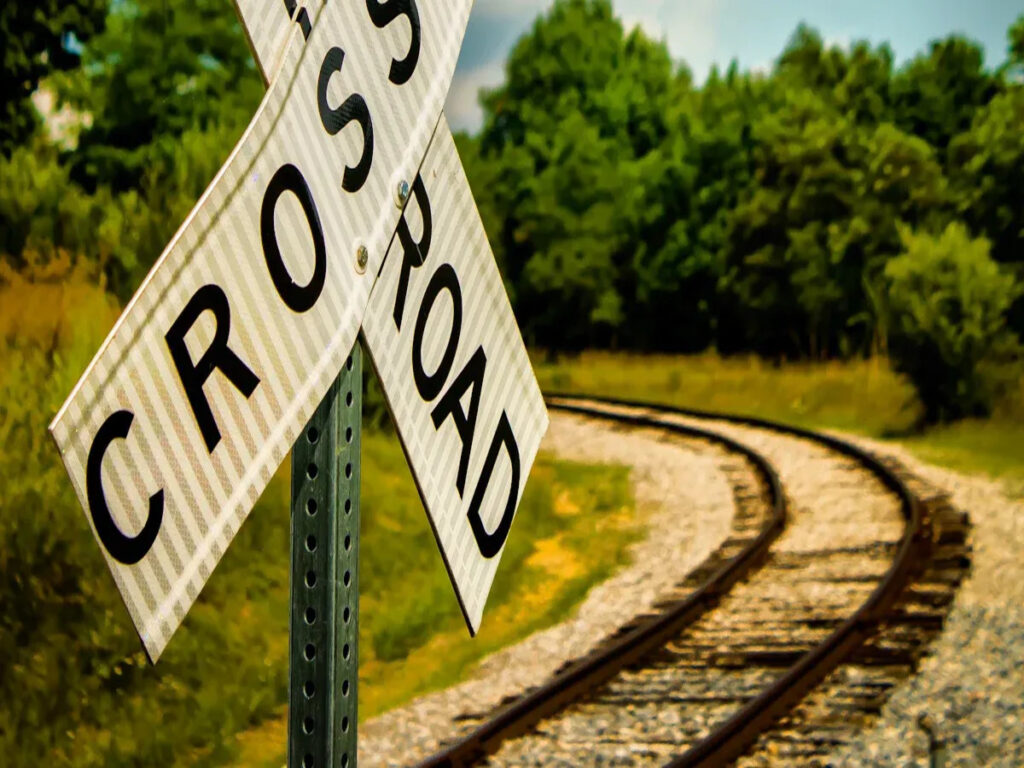
Types of Traffic Safety Signs Used
Traffic safety signs are key to keeping crossings safe in quiet zones. These signs replace loud train horns and help drivers and walkers stay alert. Different signs are used in these areas:
- No Train Horn Signs: These signs tell drivers that train horns won’t sound. They remind people to stay careful near crossings.
- अग्रिम चेतावनी संकेत (W10 Series): These signs warn drivers about a railroad crossing ahead. They are placed early to give drivers time to prepare.
- Do Not Stop on Tracks Signs: These signs tell drivers not to stop their cars on the tracks. यह दुर्घटनाओं को रोकने में मदद करता है.
- Crossbuck Signs with Yield or Stop Combinations: These signs are the main warning at crossings. They tell drivers to either stop or yield, depending on the crossing rules.
Each sign has its own job, but together they make crossings safer. By showing clear rules, these signs help avoid accidents and keep traffic moving smoothly.
Placement and Visibility Standards
Where signs are placed and how visible they are is very important. Signs must be easy to see for both drivers and walkers. Safety rules say signs should be high and angled for best visibility, खराब मौसम में भी.
Reflective materials make signs easier to see at night. Special coatings like engineer-grade or diamond-grade reflectivity keep signs visible in different lighting. Signs should not be blocked by trees or buildings. Regular cleaning and fixing are needed to keep them clear and readable.
द्वारा एक अध्ययन हम. परिवहन विभाग shows why placement matters. It found that markings and signs at crossings helped fewer cars stop in dangerous spots. This proves that good placement and clear signs make quiet zones safer.
How Signs Replace Audible Warnings
In quiet zones, signs take over the job of train horns. They guide drivers and walkers to stay alert near crossings.
Studies show that well-designed signs improve safety. People walking or biking notice these signs more, जिससे दुर्घटना का जोखिम कम हो जाता है. But many older signs don’t meet safety standards, showing the need for better designs.
| प्रमाण | विवरण |
|---|---|
| Consistency in Design Standards | Clear and consistent signs improve safety at crossings. |
| Attention to Warning Devices | Walkers and bikers notice good signs, दुर्घटनाओं को कम करना. |
| Lack of Compliance | Many old signs don’t follow safety rules, needing updates. |
By using clear signs instead of loud horns, quiet zones stay safe and peaceful. जैसे संकेत “No Train Horn” और “Do Not Stop on Tracks” keep people aware of dangers without noise.
Enhancing Safety Beyond Traffic Signs
Four-Quadrant Gate Systems
Four-quadrant gates are advanced tools for railroad crossing safety. Unlike regular gates, they block both entry and exit lanes. This stops cars from driving around the gates when trains are near. Fully closing the crossing lowers the chance of accidents caused by careless drivers.
These gates also work during emergencies. Sensors detect cars stuck inside the crossing area. If a car is trapped, the gates open to let it out safely. This prevents new dangers while keeping crossings secure. Communities using these gates often see fewer rule violations. They are a smart choice for quiet zones.
Channelization Devices and Raised Medians
Channelization devices and raised medians are affordable ways to improve safety. They stop cars from driving around lowered gates. Raised medians act as barriers to block risky moves.
Studies show these tools work well at crossings:
| अध्ययन स्रोत | निष्कर्ष |
|---|---|
| Railroad-Highway Grade Crossing Handbook | Median barriers reduce cars breaking crossing rules. |
| Railroad Quiet Zones | Channelization tools improve driver behavior and are budget-friendly. |
| Railroad Quiet Zones | QWICK Kurb systems cut gate rushes by 70%. |
Using these tools makes crossings safer while keeping the area quiet.
Integration of Technology with Signage
Technology helps traffic signs work better. Reflective materials make signs easier to see at night. उदाहरण के लिए, reflective posts reduce accidents by making signs stand out.
Research supports using technology with signs:
- Reflective posts improve visibility in dark conditions.
- Ohio studies show bigger reflective areas on Chevron signs boost brightness by 286%.
- Software analysis links brighter signs to better driver awareness.
Mixing technology with safety tools creates safer railroad crossings.
Overcoming Challenges in Sign Implementation
Following MUTCD Rules
It’s important to follow the म्यूटेक नियम यातायात संकेतों के लिए. These rules make sure signs look the same everywhere. This helps drivers and walkers understand signs easily and stay safe.
उदाहरण के लिए, MUTCD says how big and bright signs should be. It also explains where to place them for better visibility. Following these rules keeps crossings safe and meets federal standards. This is especially important for quiet zones.
Using Strong and Reflective Materials
Good materials make traffic signs last longer and work better. Strong materials keep signs clear even in bad weather. Studies show High-Intensity Reflective Materials are brighter than older materials. They also last longer when tested in tough conditions.
New rules say reflective materials must stay 80% bright after long tests. This means signs stay easy to see even after sun, बारिश, या बर्फ. Using these materials keeps crossings safe and reduces the need to replace signs often.
Keeping Signs Clean and Safe
Signs need regular care to stay useful. गंध, भित्ति चित्र, or damage can make them hard to see. Cleaning and fixing signs often helps keep them clear. Anti-graffiti coatings make cleaning easier and protect signs from damage.
In areas with vandalism, cameras or tamper-proof parts can help. These tools stop damage and keep signs working well. By taking care of signs and stopping vandalism, you can make them last longer and stay safe.
The Lifesaving Role of Traffic Safety Signs
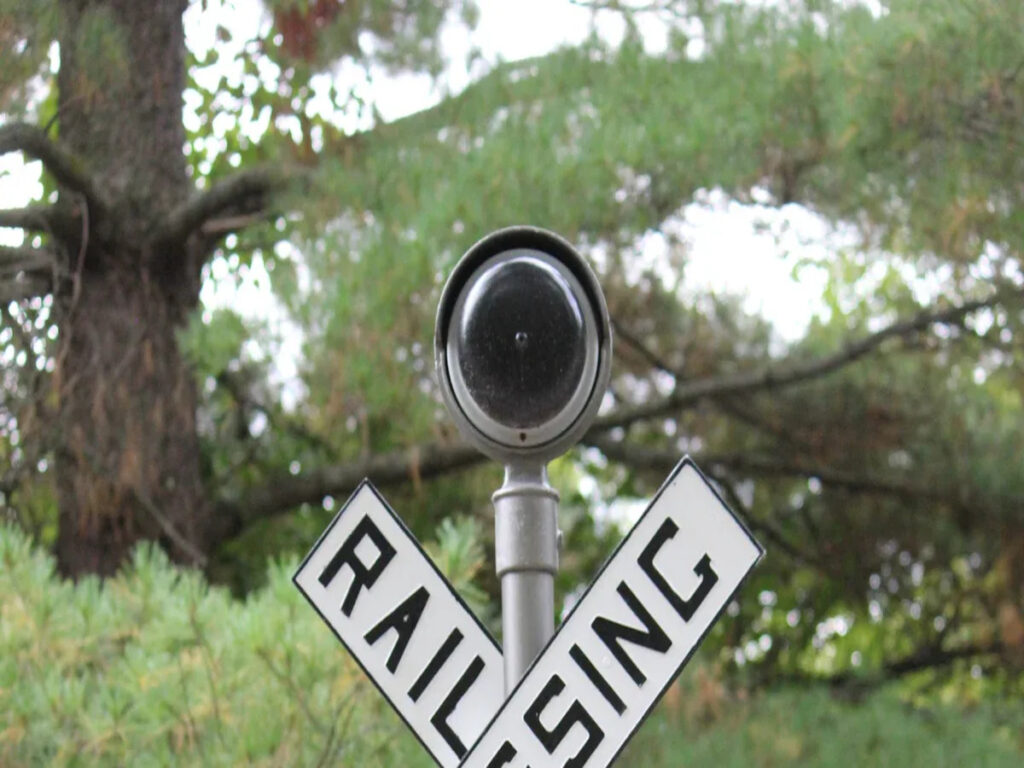
Keeping Drivers and Walkers Alert
Traffic signs help drivers and walkers stay safe near train tracks. In quiet zones, where train horns are silent, signs are key. They show when to stop, उपज, or go safely. उदाहरण के लिए, “No Train Horn” signs remind you to stay careful without hearing a horn.
Studies prove traffic signs improve safety. One study found drivers stopped 30-40% more with signs. Walkers used crosswalks 35% more when signs were clear. Another study showed better signs made drivers stop for walkers more often. These results show how good signs reduce accidents and keep people alert.
Following Rules and Reducing Risks
Good traffic signs make roads safer and lower risks for cities. Clear signs help people follow rules, cutting down crashes and deaths. जैसे संकेत “Do Not Stop on Tracks” and crossbuck signs guide drivers to obey safety laws.
Cities use strong, legal signs to avoid fines and improve safety. These signs also help traffic move smoothly by showing when to stop or go. This reduces traffic jams and makes driving easier. The table below shows how signs improve safety:
| फ़ायदा | स्पष्टीकरण |
|---|---|
| कम दुर्घटना | Signs warn drivers early, दुर्घटना के जोखिम को कम करना. |
| बेहतर यातायात प्रवाह | Signs guide cars to stop or go, देरी को कम करना. |
| Legal Safety | Cities meet rules, keeping roads safe and avoiding penalties. |
Helping Communities Stay Safe in Quiet Zones
Signs are vital for safety in quiet zones. These areas lower train noise but still need safe crossings. Signs guide people to make smart choices without loud warnings. अग्रिम चेतावनी संकेत, उदाहरण के लिए, give you time to prepare for a crossing.
Clear signs prevent crashes and save lives by reducing confusion. Communities with good signs see fewer accidents and feel safer. Combining signs, द्वार, and other tools keeps noise low while protecting everyone.
Quiet zones make neighborhoods quieter by cutting down train noise. They also need strong safety tools to keep people safe. यातायात सुरक्षा संकेत are important for guiding drivers and walkers. These signs take the place of loud train horns.
🚦 क्या आप जानते हैं? Quiet zones in the U.S. grew from 700 को 1,016 in five years. Even with this growth, 59% of crashes and 78% of deaths happen at gated crossings.
| सांख्यिकीय | Number |
|---|---|
| Quiet zones in the U.S. | 1,016 |
| Growth in quiet zones over five years | 316 |
| Grade-crossing crash percentage | 59% |
| Fatality percentage at gated crossings | 78% |
Cities should focus on clear, strong signs to keep crossings safe. Good signs help reduce noise while protecting everyone in the community.
अक्सर पूछे जाने वाले प्रश्न
What is a quiet zone?
A quiet zone is an area where trains don’t use horns at crossings. These zones lower noise pollution and use tools like यातायात सुरक्षा संकेत to keep people safe.
How do traffic safety signs improve safety in quiet zones?
यातायात सुरक्षा संकेत replace train horns to warn people about trains. जैसे संकेत “No Train Horn” और “Do Not Stop on Tracks” help drivers and walkers stay alert and avoid accidents.
Are quiet zones safe without train horns?
हाँ, quiet zones are safe with the right safety tools. इसमे शामिल है यातायात सुरक्षा संकेत, द्वार, और बाधाएं. एक साथ, they reduce risks at crossings.
Who decides if a quiet zone can be established?
Local communities ask the Federal Railroad Administration (FRA) for approval. They must add safety tools to make up for the missing train horns.
What materials make traffic safety signs effective?
मज़बूत, reflective materials like High-Intensity coatings make signs easy to see. These materials work well in bad weather and at night, keeping crossings safe.
🚦 बख्शीश: Cleaning and fixing signs often keeps them clear and safe for everyone.

